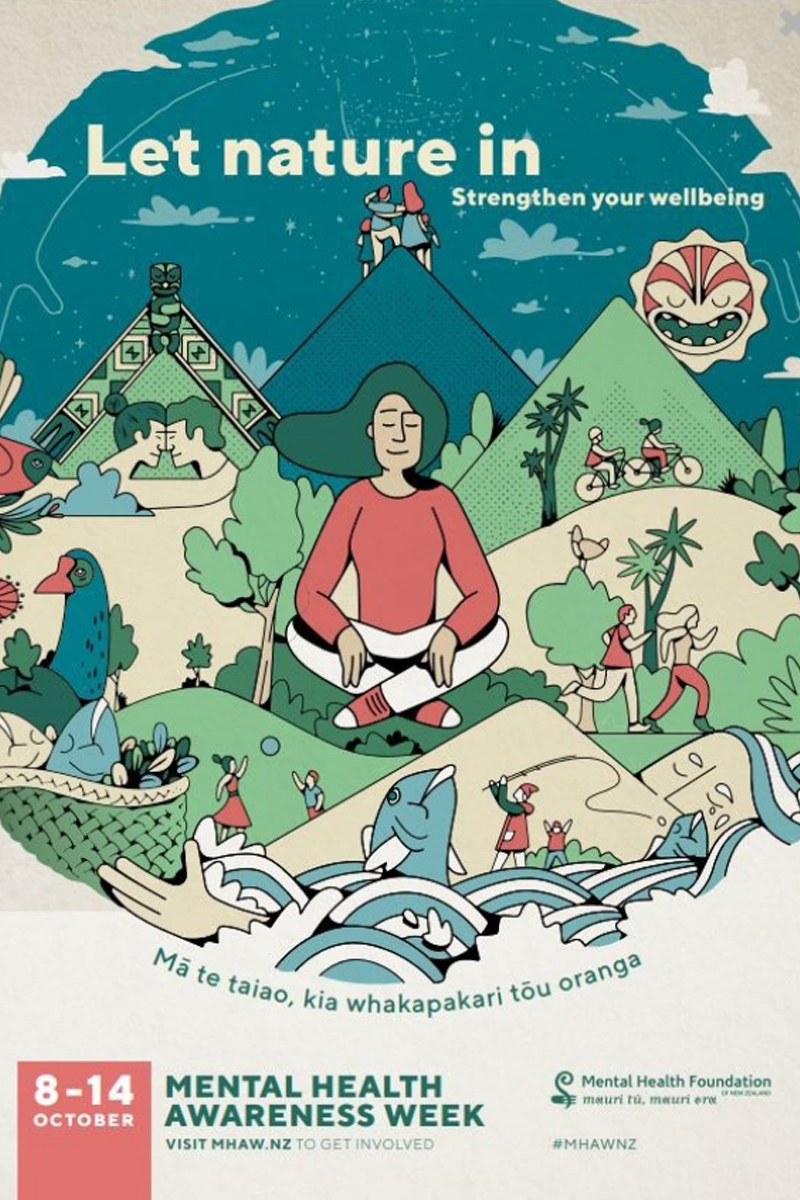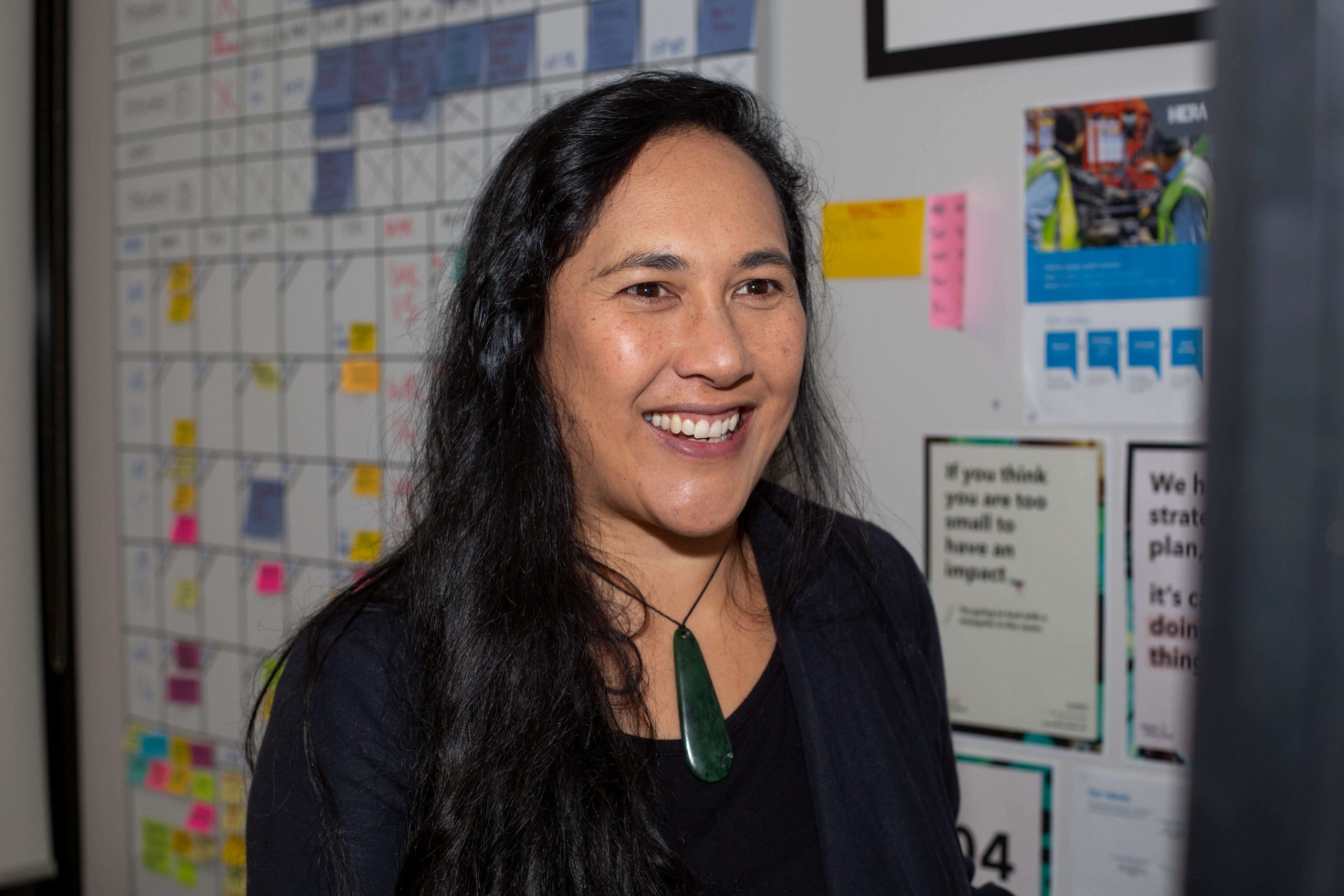HERA has made a commitment to make work-life-balance a value that we live by. This means promoting a focus within our team toward total wellbeing and safety.
That’s why this month, our Health, Safety & Environment team decided it was important that we support Mental Health Awareness Week (MHAW).
Since 1993, MHAW has been run annually by the Mental Health Foundation. It’s endorsed by the World Federation for Mental Health and is marked in over 150 countries at different times of the year. This year’s theme in New Zealand is ‘Let nature in, strengthen your wellbeing – Mā te taiao, kia whakapakari tōu oranga!’
Nature has been selected as the theme because the simple act of connecting with nature can uplift your wairua/spirit and promote mental health and wellbeing.
For HERA, we’ve taken the challenge to remind our members and team how they can grow, support and nurture their wellbeing through nature.
Addressing mental health at work
The Mental Health Foundation of New Zealand is a charity. They work towards creating a society free from discrimination, where all people enjoy positive mental health and wellbeing.
In New Zealand this work is very important – because mental health problems are very common. Nearly half our population will meet the criteria for mental illness diagnosis.
Where, just three years ago it was estimated that 636,000 adults (17%) were diagnosed with a mood disorder and/or anxiety such as depression. And, that 225,000 of these same adults reported experiencing mental distress in the previous four weeks to this diagnosis.
Our NZ metals industry has a role to play in ensuring we create work environments where employees have mechanisms to speak up. And, a culture where admitting you’re mentally unwell is OK to do. We must remove the stigma around talking about how we’re feeling to others.

Why? Because it was found through a recent BRANZ study that our NZ construction industry has the highest percentage of suicide for employed men of any industry. A key driver to the high rates – the poor culture.
Described as “macho” and “bullying” and including intolerance of diversity, the culture was seen to significantly contribute to poor mental health of construction industry workers.
For the worksite poor mental health is is very dangerous as ‘not being present’ is seen as a major health and safety risk.
The five ways to wellbeing
We can all take steps to achieve better wellbeing in our everyday life. Regardless of how much or little we may interact with nature.
The Mental Health Foundations gives five core ways to do this:
One.
Connect / Whakawhanaungatanga
Talk and listen – me kōrero, me whakarongo, be there – me whakawātea i a koe, feel connected – me rongo i te whanaungatanga.
You can connect in so many ways. Connect with the people around you, such as your whanau/family, friends, colleagues and neighbours. Connect at home, work, school, or in your local community. Think of these relationships as the cornerstone of your life and invest time in developing them. Building these connections will support and enrich you every day.
In the illustration – the design shows the connection between people and nature, particularly in places of cultural significance. The marae and two people in a hongi represents people receiving and giving strength to each other. Their wellbeing is boosted through a community context.
Two.
Give / Tukua
Your time – te wā ki a koe, your words – ō kupu, your presence – ko koe tonu.
Do something nice for a friend, or a stranger. Thank someone, smile, or volunteer your time by joining a community group. Seeing yourself, and your happiness, linked to the wider community can be incredibly rewarding and creates connection around you. It feels good to give and everybody has something to offer. How will you play your part?
In the illustration – giving is all about sharing the first of your harvest. Papatūānuku is gifting the kete/basket of kaimoana/seafood. The sun is providing warmth and energy. It’s also acting as a kaitiaki/guardian in the sky to support the work of Ranginui.
Three.
Take notice / Me aro tonu
Remember the simple things that give you joy – me aro tonu ki ngā mea māmā noa i ngākau harikoa ai koe.
Be curious and catch sight of the beautiful, remark on the unusual. Notice the changing seasons. Try savouring the moment, whether you are walking to work, eating lunch or talking to friends. Be aware of the world around you and what you are feeling. Reflecting on your experiences will help you appreciate what matters to you.
In the illustration – the whānau/family on the hill are looking up at Ranginui/Sky Father, discovering his role and admiring his beauty. They’re learning about themselves and the natural environment as they do it. Another illustration representing ‘Take Notice’ is the woman in the middle of the poster, who is closing her eyes and paying more attention to the present moment, her thoughts, feelings and the world around her.
Four.
Keep learning / Me ako tonu
Embrace new experiences – awhitia te wheako hou, see opportunities – kimihia ngā ara hou, surprise yourself – me ohorere koe i a koe anō.
Try something new or rediscover an old interest. Sign up for that course or take on a different responsibility at work. Learn to play an instrument or how to cook your favourite food. Set a challenge you will enjoy achieving. Learning new things will make you more confident as well as being fun. Seek out new experiences and dare yourself.
In the illustration – connecting to places that enrich cultural identity feature throughout the design. Maunga, awa, whenua and marae are all places that are spoken about in a pepeha (how Māori connect through their whakapapa/genealogy). The illustration encourages you to continue learning about your whakapapa, regardless of where you come from, and to reconnect with your family.
Five.
Be active / Me kori tonu
Do what you can – whāia te mea ka taea e koe, enjoy what you do – kia pārekareka tāu i whai ai, move your mood – kia pai ake ō piropiro.
Step outside, when was the last time you went for a bike ride, a jog or a walk in the fresh air? You could try playing a game or dancing with young ones. Check out your garden. Pulling some weeds or planting something new can help you work up a sweat. Exercising makes you feel good. Discover a physical activity you enjoy and one that suits your level of mobility and fitness. Do what you can, enjoy what you do, be active and move your mood.
In the illustration – this is featured throughout the design through fishing, running, playing, biking, hiking and being mindful. These are just a selection of common ways to be physically active in Aotearoa.
How are we taking part?
We’re running a series of events over the working week designed to push all those based in HERA House to do things that connect with nature.
- Mindful Monday – challenges our team to ‘take notice’ by running a lunch time meditation session.
- Talk it out Tuesday – is all about ‘secret banter,’ where participants are encouraged to connect by doing something special for a secret person they’re issued.
- Walking Wednesday – you guessed it, is about ‘being active.’ We’re arrange a group walk at lunch time to the local park.
- Thoughtful Thursday – is focused around asking our team to ‘give.’ We’ll be on a mission to collect donations for the Mental Health Foundation. And,
- Soul food Friday – challenges us to ‘keep learning’ about each other. We’ll be having a shared lunch where we’re asking each team member to bring in a plate that represents their culture or personal philosophies in life when it comes to eating!
We’ve asked everyone to take photos to document their journey – and hopefully we’ll have some to share with you over the week!
So the question is – what are you doing to take part in Mental Health Awareness Week?
